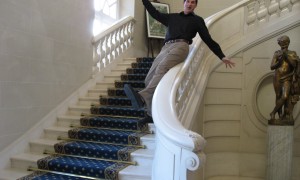I just finished reading a book with a totally hokey title, but lots to think about. It totally grabbed my attention. It’s title: “Glimmer: How Design can transform your life, and maybe even the world.”
Now, I think anyone who thinks he knows how to transform the world has a pretty big ego, but I dived into the book because I’m really interested in design and what this guy (Warren Berger) has to say about it.
Well, I was fascinated.
The author defines design and gives an overview of how the world of designers has changed and how they are looking at things differently. There are sections on business, social action and personal lives. Very few words delve into aesthetic design—seemingly viewed as trendy.
The title comes from what the author calls, “the glimmer moment—the point when a life-changing idea crystallizes in the mind.”
But most interestingly to me are the basic principles of design that can be applied to every day living—yours and mine-along with implications for society as a whole.
Here are some sound bites that I highlighted and will hopefully remember:
When confronting a challenge, “Ask stupid questions.” The idea is to question basic assumptions.
This little funny illustrates the point……
How many designers does it take to change a light bulb?
Answer: Does it have to be a light bulb?
Another way of saying, “Think out of the box.” The book gives some great examples. Made me think about our renovation project when the design team was trying to figure out how to get light fixtures on shelving that had no trim and no visible means of support.
The architect suggested making the wall behind the shelves glass, allowing light to come from the hallway beyond. Eureka. No light bulbs needed.
I’m also intriqued with the idea that it is ok to be unsure and uncertain. Bruce Mau, a Canadian designer, calls this “lost in the woods.” He says, “If you are lost in the woods, everything about your surroundings takes on an added significance. Suddenly you have to navigate and negotiate every detail of the environment, processing all of it while trying to regain your bearings.” When people are in this hyper-attuned” state, Mau reasoned, it’s an ideal time to experiment and speculate, because the mind is wide open and senses are alive.
Glimmer moments happen, the possibilities endless and solutions appear.
I loved the examples of solving the problem of getting clean water to small villages in Africa. The designer created a bicycle that filtered the water as the rider pedaled. The book is chock-o-block with compelling anecdotes.
If you’re interested in or working in the design world—interior, landscape, product, social action, stylistic, whatever—this might be a book to put on your Holiday Wish List. Interesting stuff.
“Glimmer How Design can Transform your life, and maybe even the World”
By Warren Berger
Penguin Press
2009





Comments
0 CommentsLyle
Nov 4, 2009This post is a wonderful reminder about the pick-up aspects of reading. I read so much these days that is required by my course of study. How delightful to simply pick up a book and fall in love with the ideas without being prompted. I cannot wait until that can happen again. Not that I mind all the reading as I am learning a great deal. But the simple delight in a mind-expanding thought coming from “out of the blue” sounds like a vacation to me.
Peggy DePersia
Nov 11, 2009Interesting that the concept of reflection is explored. I recently watched a video of ‘Last Chance Harvey’ for purposes of sheer diversion and a need for something light. What struck me was the use of reflected images of the individuals via movie film to suggest, at least in my own mind. the reflective states of mind that the characters in the movie were experiencing. The reflections seemed very intentional as a device and I thought that it was noteworthy that the characters were ‘middle aged’. One concept can spawn so many connections.